It’s one of your pet peeves, and ours too!
As every visitor to the Santa Cruz River knows, trash is a persistent environmental issue. Our community has long brought up trash as something they want to see addressed in the river channel. Stakeholder meetings held in 2019 and 2020 with Pima County Regional Flood Control District consistently tread on the recurring question: can anything be done about the trash? We get it, trash is ugly, and keeps coming back even after it has all been picked up.
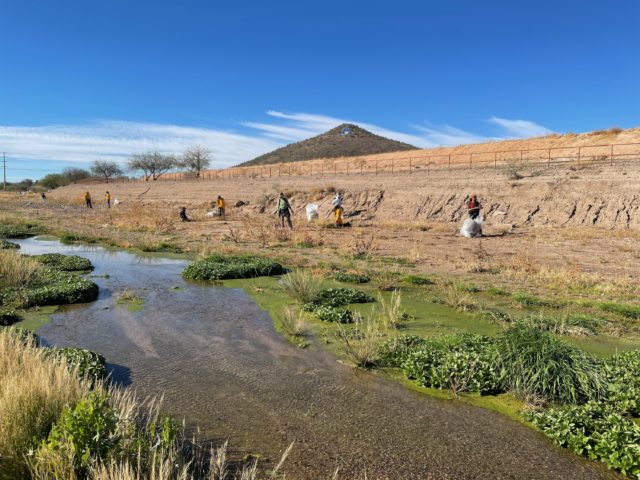
Removing trash in cleanup events with the help of amazing volunteers can make a big difference in the short term. Cleanups prevent trash from accumulating, breaking down into smaller, harder-to-collect pieces called microplastics, and helps prevent chemicals from becoming dissolved in the water. Collecting the trash keeps it out of the way of wildlife who need the river to drink, hunt, nest, den or find a mate. Styrofoam cups aren’t helpful in any of those situations! When enough trash, like plastic bottles, form “bottle dams” even the flow of the river can be affected. Stagnant pools make great breeding grounds for mosquitos and other pests.
First, let’s count
We want to make sure we can answer some key questions about the trash affecting the Santa Cruz River. Our goal is to identify its source so that we can create long-lasting solutions, and we’ve begun low-tech method to count it before we collect it.
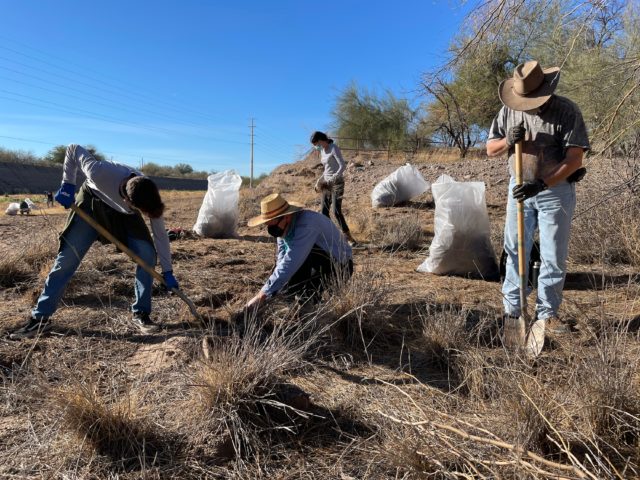
Systematically, we mark out 10-meter by 10-meter sections, put on our gloves, grab our pickers and start collecting data. On a clipboard (see, we told you it was low-tech) we mark each and every piece of trash we find before we bag it. Everything has to be collected in one area before we move onto the next. This protocol can be used in the river channel, up on the banks, on the trails like the Loop next to the river, or in the washes that lead to the river. Each type of trash has a field-verified weight, which we use to estimate the total mass of garbage.
Still counting…
Preliminary data show that food packaging and cups constitute 48% of all items of trash in the river. Single-use plastic bags and clothing each account for 10% of the items removed from the Santa Cruz. Over time, the trash database will grow, providing data that will help identify the sources of trash and to aid in designing solutions that can sequester trash before it reaches the river.
Our goal is to identify its source so that we can create long-lasting solutions.
Engineering solutions
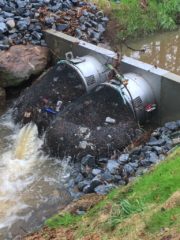
Physical collectors can be installed where storm drains meet the Santa Cruz or the tributary washes. By doing our trash surveys we can determine the best locations for such a trash trap, taking into consideration things like how much trash originates at which point, how accessible it is for workers to empty them, and the force of water during monsoon flows. There are a few different types of these solutions that can collect thousands of pounds of of trash each year before it flows downstream.
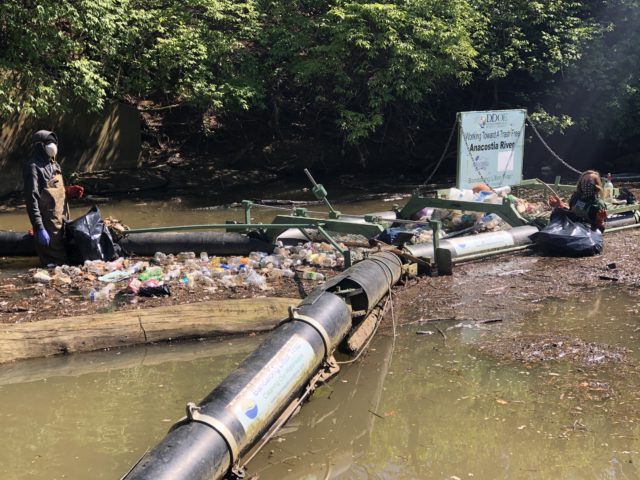
How can you help?
Organize your friends, family, and neighbors to volunteer for a morning or afternoon of fun. Cleanups can be done in your own neighborhood streets or washes and will still help our watershed and our river. Almost all washes and roadways in Tucson, Marana, Green Valley, Sahuarita, Rio Rico and Nogales flow toward the Santa Cruz River. Sometimes the washes flow to the Rillito, Pantano, or Nogales Wash first, but those lead to the Santa Cruz River, too.
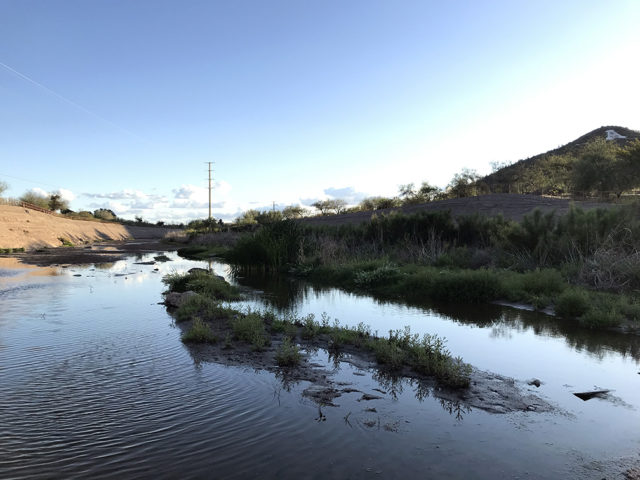
Supplies for a safe cleanup event include gloves, garbage bags, sturdy shoes, sun protection, and lots of water to stay hydrated. Tucson Clean and Beautiful often hosts community cleanup events throughout the year and supplies nearly everything you need to participate. If you head out to clean up trash, make sure to take photos and share them on your social media with #NotInMyRiver to encourage your friends to clean up trash too!
Blog post by Corinne Matesich, Marketing Communications Manager and Luke Cole, Associate Director
